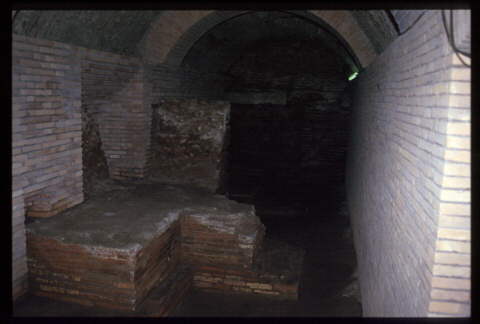Swedish Research in
San Lorenzo in Lucina
(Rome)
- The Transformationsof a Late Antique
Roman Quarter
ROMAN AND
EARLY CHRISTIAN
PHASES
Made by: Olof Brandt
Swedish Institute in Rome
Web page:
http://www.svenska-institutet-rom.org
Via Omero 14
I-00197 Rome, Italy
E-mail: isvroma@vatlib.it
| THE EXCAVATIONS | Italian excavations 1982-1987 |
| Swedish excavations 1993-1998 | A 360° view of the excavation |
How the research began -
Italian excavations 1982-1987| Italian excavations
begin in 1982
Although restored and rebuilt several times, the Early Christian basilica with its nave, aisle and apse is still standing in the modern Piazza San Lorenzo in Lucina, after more than 1600 years. Much of the past is hidden beneath the sixteenth century floor, raised to the modern street level in 1598. This space was used for tombs until the late nineteenth century. The Swedish excavation 1993-1998 was the continuation of earlier research made by archeologists of different nationalities beneath the floor of the church. Already in the thirties, Richard
Krautheimer explored some of these crypts and discovered the thresholds
of the fifth century church and some T-shaped piers of a big Roman third
century building (an "insula").
Maria Elena Bertoldi understood that this was the baptistery of the Early Christian church, but the excavations of the baptistery was not completed. The baptistery was object of the Swedish Excavations 1993-1998. Background: What are the Early Christian Baptisteries? Read here! The story continues: Read about The excavations 1993-1998 |

